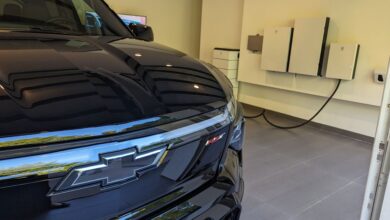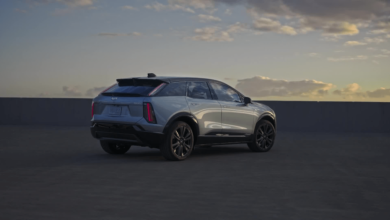Australia is likely to become a more attractive market for EV car makers. But are we ready?

With new efficiency standards to become law from 2025, Australia is poised to become a more attractive market for electric car makers.
But are we ready for it?
University of Queensland (UQ) researcher Dr Kai Li Lim says it’s imperative Australia — and its infrastructure — is ready for a potential influx of electric vehicles (EVs).
“The transition to EVs will require both strategic investment and careful thinking, as charging technology and charging behaviour continue to evolve,” he said.
Here are five things researchers say we need to do to capitalise on an electric future.
Invest in charging infrastructure
It’s the most obvious area where Australia is lagging behind other countries, according to those in the field.
Dr Lim, from UQ’s Centre for Sustainable Engineering Innovation, has been researching the reliability of charging stations in Australia.
“I think charging infrastructure at the moment needs to be more resilient,” Dr Lim said.
“You don’t really have the density of charging stations that you would in [for example] western European countries or in North America.”
He said users also report charging stations are often vandalised, broken and don’t work.
If Australia is to promote a future that fosters lower emissions vehicles and EV production, it’ll need more reliable charging infrastructure.
But Dr Lim said it’s a balancing act
“You have to invest in charging stations, or rather, deploy charging stations where you will be able to see traffic and utilisation,” he said.
“On the other hand, you don’t really want to overinvest to a point that you have more and more charging stations sitting there vacant.”
Enable EVs to supply energy back to the grid
Electric cars also have the potential to power our homes, or feed electricity back into the grid with leftover charge.
“Electric vehicles are very interesting because the batteries are quite large relative to household loads and the loads that are on distribution networks,” UQ Associate Professor Archie Chapman said.
“So they can provide a lot of valuable support to the local network and to the grid as a whole.”
Renewables “have reduced the costs of producing electricity”, he said, but these systems aren’t always available to the everyday consumer.
Dr Chapman said electric vehicles offer a cheaper and more accessible option.
“Light and heavy EVs should be enabled and encouraged to supply energy back to the grid, lowering energy costs for consumers and reducing greenhouse gas emissions.”
Replace the fuel excise
Motorists pay a tax at the pump called a fuel excise, which is used by the federal government to pay for roads and upkeep.
Dr Chapman believes the fuel excise should be replaced with an “efficient or economically sound road user charge” that’ll cover electric vehicles too.
“A fair road user charge for EVs will eventually be needed to replace the loss of fuel excise revenue in Australia, and to continue recouping road costs equitably,” Dr Lim added.
This could be a tax per kilometre travelled, to be applied to both petrol and electric vehicles.
Another possibility is a congestion tax, where areas with dense traffic implement a toll to deter drivers.
Address workforce shortages
There will be “high demand for a workforce in all parts of the EV sector”, according to Dr Lim.
That includes having staff to install, operate and maintain vehicles and chargers — a complex task that requires specialised courses to meet skill demands.
“Workers in the internal combustion engine vehicle sector should be supported with transition programs, and ideally be provided with pathways toward EV manufacturing and services,” Dr Lim said.
“These are new skills as well, because we’re talking about new standards that are coming in internationally,” he added.
Dr Chapman said one thing was “for certain”.
“Because this is a growing industry, we will be expecting more and more shortfalls until this stabilises a few years into the future,” he said.
Include heavy vehicles in targets
A lot of the focus is on passenger EVs but there’s also big potential in freight too, Dr Dia Adhikari Smith from UQ’s Dow Centre and School of Civil Engineering noted.
“We are moving in the right direction, but I still think we are lacking when it comes to decarbonising our heavier vehicles, because around 38 to 40 per cent of road transport emissions comes from trucks,” she said.
“So it’s not something we can ignore or neglect.”
While emissions targets have been set for cars and light commercial vehicles, there aren’t any yet for heavy vehicles like trucks and buses.
“It should start with a target,” Dr Adhikari Smith said.
She pointed to a global memorandum of understanding, which has been signed by 35 countries so far and includes a target of “30 by 30”.
“They want 30 per cent of all new trucks and buses [sold] to be zero emission by 2030, so there is a set target to hit.”
Posted , updated



